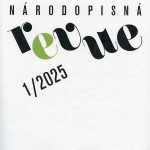
The study examines the development of urbanisation in the West Slavic area. During the twelfth century, colonisation took place in this region, which was accelerated after the dissolution of the statehood of the Polabian Slavs. The German settlement of the Slavic territories soon spread to the Central European states. The colonists brought with them a new type of urban settlements, which were legally defined and had a specific structure and character. The arrival of urban culture in the West Slavic environment triggered a socio-economic revolution that completely transformed local society. Simultaneously, this process led to irreversible ethnic changes, which, in some regions, were fatal for the indigenous population. In other areas, however, the cities were slavicised and the new urban culture became part of local society. These dynamics resulted in the formation of a special cultural area in Central Europe.
The study is devoted to the fate of one important symbol of Odessa ¬- the monument to the founders of this city. This monument has been repeatedly covered up, destroyed, again unveiled and restored over the past hundred years. From the position of a broader history of this monument and the city, the author attempts to offer answers to several questions related to the local, national and transnational social functionality of this repeated restoration and destruction. The text argues that the presence or absence of the Odessa monument to the Russian Tsarina reveals differently conceived memorial images of the city. However, the narrative value of the observed monumental phenomenon is much broader and refers to the national context, to the tragic outcome of the socio-political development of post-Soviet Ukraine.
This study examines the evolution of the image of the Czech city of Most as presented in local history publications and fiction since the second half of the 20th century. During the period under study, descriptions of the city and its history have been strongly focused on the destruction of old Most to make way for further coal mining. This event continues to shape the perception of Most as an industrial city with a broken continuity of development, which is being rediscovered through its own past and efforts to reinterpret it. By analysing the themes contributing to the city´s image and the discourse capturing them, the study provides an overview of the transformed narrative surrounding the historically mediated image of Most and the context in which places of memory are created.
This text reflects the growing interest among Volhynian Czechs many of whom were resettled from the former Soviet Union to Bohemia in 1945-1947 and their descendants in their own history. It examines which historical topics are currently of particular focus for Volhynian Czechs and which aspects they emphasize in their historical interpretations. The text concentrates on the most active members of the community, particularly eyewitnesses, historians, and community leaders. It draws primarily on recollections gathered during the authors' field research and is supplemented by other sources. The text is framed by the concept of 'big' and 'small' history, assuming that where these two intersect, individuals generally feel a stronger need to engage in public communication of their memories.
Jubilees and Obituaries
Ľubica Droppová Celebrates Her Significant Life Anniversary (Hana Hlôšková)
Dušan Holý Has Passed Away (Martina Pavlicová, Petr Mička, Václav Štěpánek, Břetislav Rychlík)
Antonín Konrády (26 April 1931 – 1 February 2025) (Marta Ulrychová)
News
Report from the 53rd CIOFF World Congress in Bulgaria (Markéta Vašulková)
Exhibitions
Museum of Holy Pilgrimages in Neukirchen beim Heiligen Blut (Marta Ulrychová)
"And the Star Shone." An Exhibition of Nativity Scenes from the Works and Collection of Ivana Sieberová at Dr. Hostaš Regional Museum in Klatovy (Marta Ulrychová)
Reviews
J. Macková: Lidový oděv z Rusavy [Folk Costume from Rusava] (Kateřina Nečacká)
V. Hrbáčková – L. Svobodová: Tradiční úprava hlavy. Úvazy tištěných šátků na Hané [Traditional Headwear: Printed Headscarf Styles of Tying in Haná] (Gabriela Rožková)
L. Kafka a kolektiv: Ze svatého koutu světnic. Lidové podmalby na skle ze sbírek Muzea a galerie v Prostějově [From the Sacred Corner of the Cottage: Folk Reverse Glass Paintings from the Collections of the Museum and Gallery in Prostějov] (Lubomír Procházka)
J. Krček: Když jsem vandroval, muzika hrála [When I Left for a Wander, a Band Was Playing] (Marta Ulrychová)
Foundations of Hungarian Ethnochoreology: Selected Papers of György Martin (Lucie Macková Franická)
Contents in English
10469
10468
10467
10466
10465